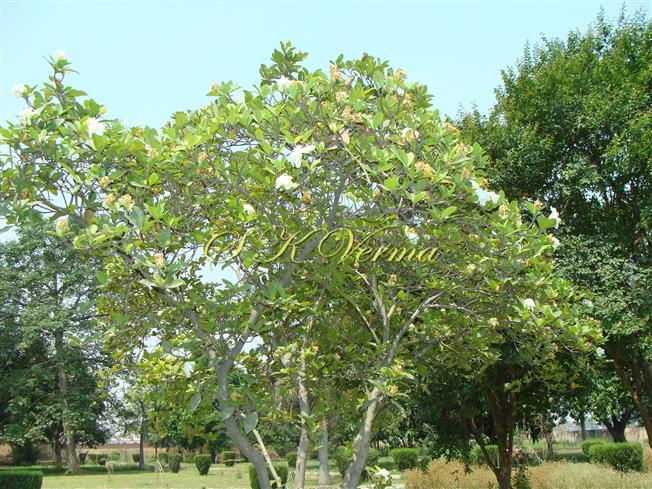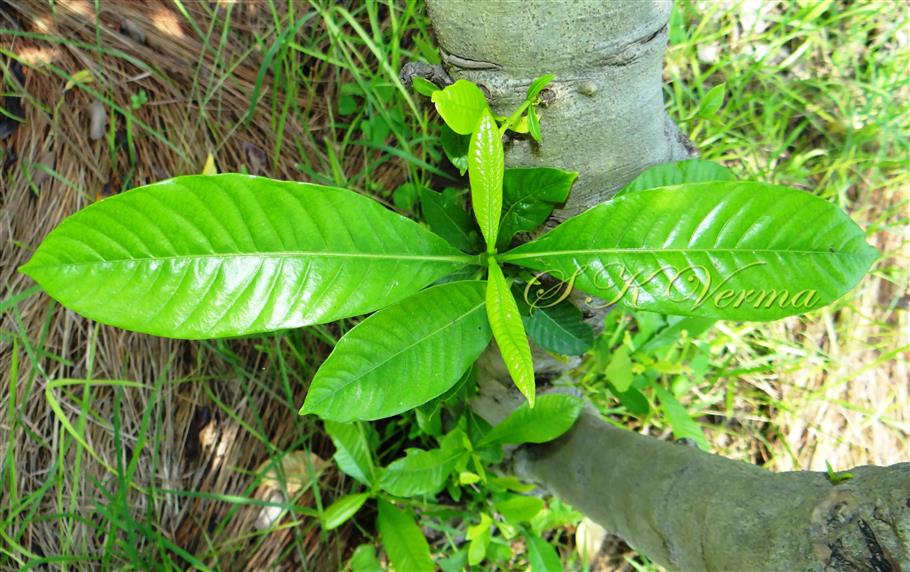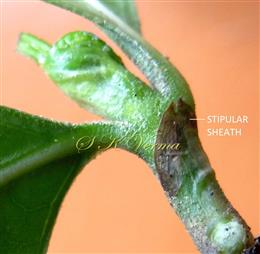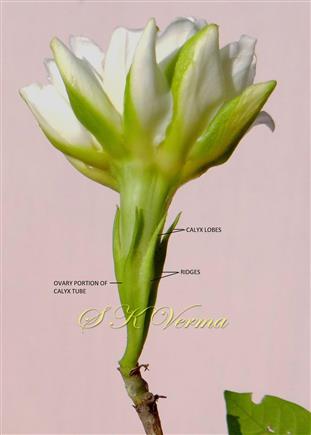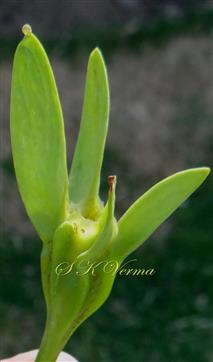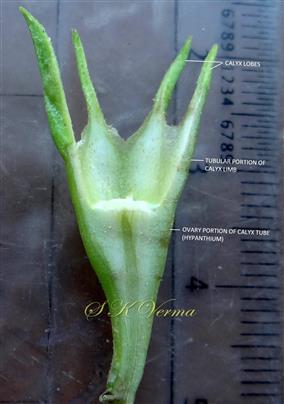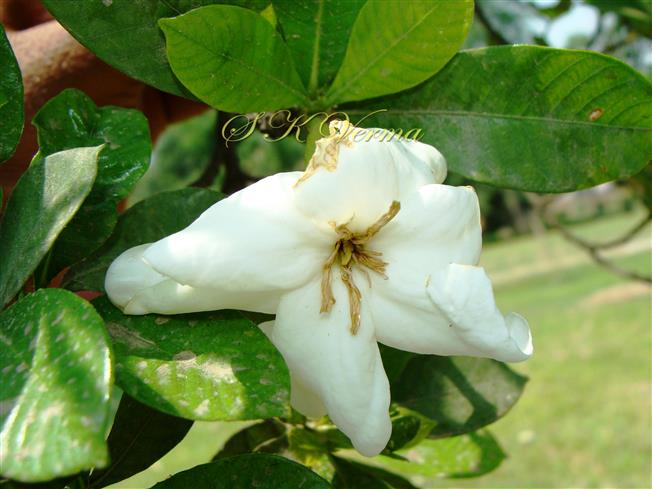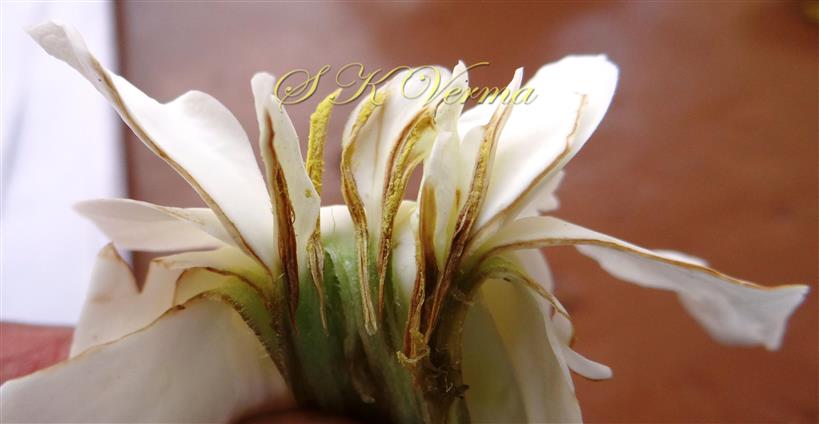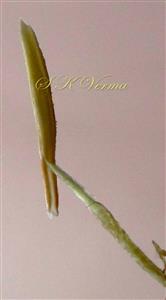GARDENIA
Gardenia
Ellis, Philos. Trans. Linn. Soc. 2: 935. 1761; Benth. & Hook. f., Gen. Pl. 2: 89. 1873; Hook. f. Fl. Brit. Ind. 3: 115. 1882; Cooke, Fl. Pres. Bomb. 2: 601. 1902; Bor & Raizada, Beaut. Ind. Climb. Shr. and Trees. 83. 1954; Bailey, Stand. Cycl. Hort. 2: 1314. 1950; Chen & Taylor, Fl. China @ eFloras.org 19: 141; Nazim. & Qaiser, Fl. Pak. @ eFloras.org p. 115.
Mostly evergreen small trees or shrubs. Leaves opposite or ternate, sometimes clustered at stem apices, subsessile coriaceous; stipules persistent or deciduous, united shortly around stem or united completely into a conical cap, triangular or when united into a cap then splitting along one side. Flowers axillary solitary, bisexual, actinomorphic, epigynous, large, showy, rarely corymbose, bracteate. Calyx with ovary portion well-developed and often longitudinally ridged; limb 5-8-lobed, sometimes fused into a tube or conical cap that splits irregularly as corolla elongates (spathaceous). Corolla white to cream, salverform or funnelform, glabrous or pubescent inside; lobes 5-12, connate in bud. Stamens 5-12, inserted in corolla throat, included or partially exserted; filaments very short or reduced; anthers dorsifixed. Ovary 1-locular, ovules numerous on 2-6 parietal placentas; stigma clavate or 2-lobed, included or exserted. Fruit generally yellow to orange, red-orange or brown with pulp usually orange, baccate, leathery or fleshy, ellipsoid to subglobose, smooth or with longitudinal ridges, with calyx limb usually persistent. Seeds many, embedded in placenta, compressed.
127 species
Gardenia jasminoides
Gardenia jasminoides
Ellis, Philos. Trans. Lind. 51: 935. 1761; Parker, For. Fl. Punj. ed. 1: 285. 1918 (Reprint 1973); ed. 2: 289. 1924; Bailey, Stand. Cycl. Hort. 2: 1315. 1950; Fl. China @ eFloras.org 19: 143; G. angusta (L.) Merr., Interpr. Bumph. Herb. Ambon. 50: 485. 1917; Smith, Amer. J. Bot. 61: 113. 1974; Nazim. & Qaiser, Fl. Pak. @ eFloras.org p. 117; G. florida L., Sp. Pl. ed. 2: 305. 1762; Bor & Raizada, Beaut. Ind. Climb. Shr. and Trees. 84. 1954.
Evergreen shrubs, up to 3 m tall, branches terete to flattened. Leaves opposite, subsessile to petiolate, petioles up to 1 cm long, densely puberulent; leaf blade 3-17 cm x 1.5-7 cm, leathery, glabrous and shining adaxially, abaxially puberulent, oblong-lanceolate, obovate-oblong, obovate, oblanceolate, elliptic, elliptic-oblong, base cuneate, apex acute to acuminate, margin entire; secondary (lateral) veins 8-16 pairs; interpetiolar stipules fused to form a sheath, split on the side. Flowers terminal and solitary, white or creamy white, very fragrant, 5-6 cm long, 4-6 cm across, bisexual, actinomorphic, epigynous; pedicel 6-8 mm long, winged. Ovary portion of calyx tube obconic or obovoid, 5-8 mm long with 6 weak to developed longitudinal ridges; limb with basal tubular portion 3-7 mm long, lobes 6, lanceolate or linear-lanceolate to spathulate, 8-12 mm x 1-4 mm, often strongly keeled, acute. Corolla white to pale yellow, doubled, outside glabrous; tube 2-3 cm x 0.4-1 cm, cylindrical, in throat pilose; lobes many (when double), obovate or obovate-oblong, 1.5-3 cm x 0.8-1.6 cm, obtuse to rounded, fleshy, waxy. Stamens 6 or more, inserted at corolla throat, included or partially exserted; normal or differently developed; anthers ca. 1.7 cm long, linear dorsifixed; filaments 5 mm long; sometimes innermost petals modified into partial lateral anthers as in Canna. Ovary inferior, 1-locular, ovules many, placentation parietal; style and stigma included, style short and stigmas longer.
Berry yellow or orange yellow, ovoid, subglobose or ellipsoid, 1.5-7 cm x 1.2-2 cm, with 5-9 longitudinal ridges or wings, with persistent calyx lobes to 40 x 6 mm. Seeds suborbicular, weakly angled, ca. 3.5 x 3 mm. (Fruits not observed).
Common Names: Cape Jasmine, Gardenia; Gandhraj (Hindi)
